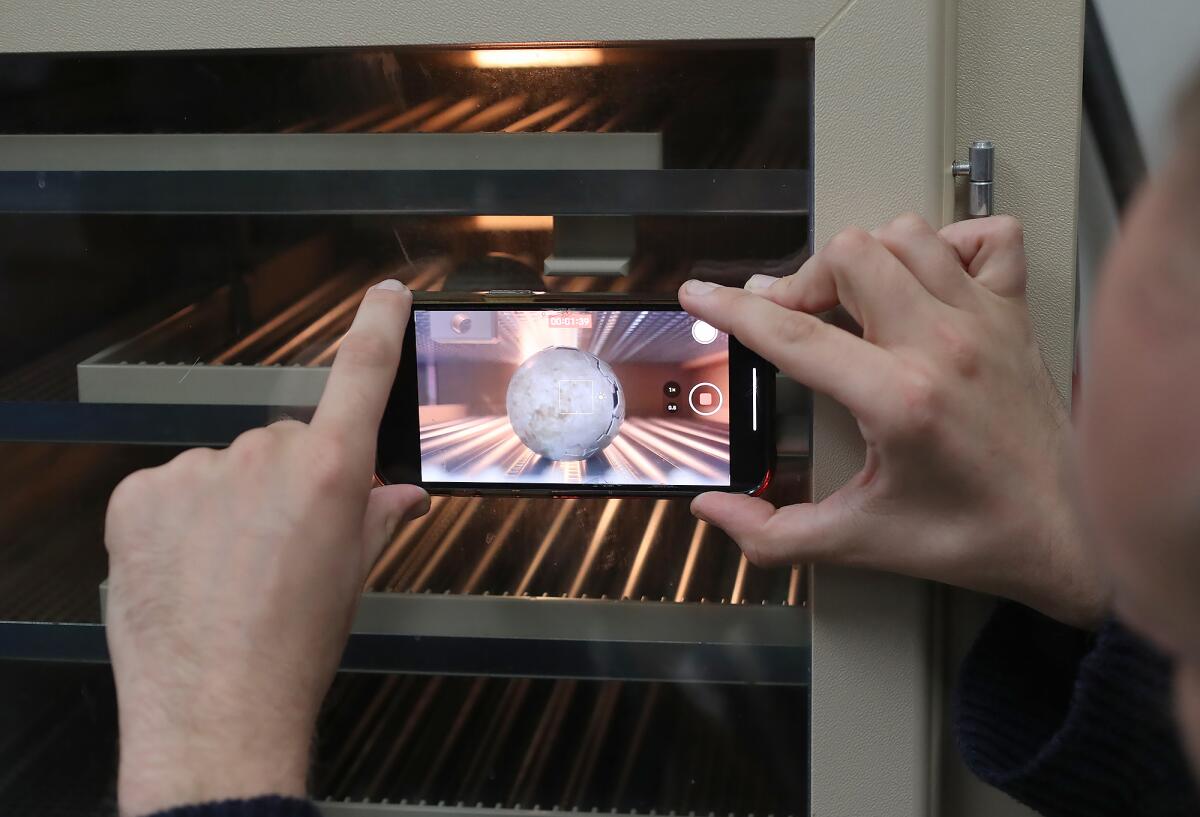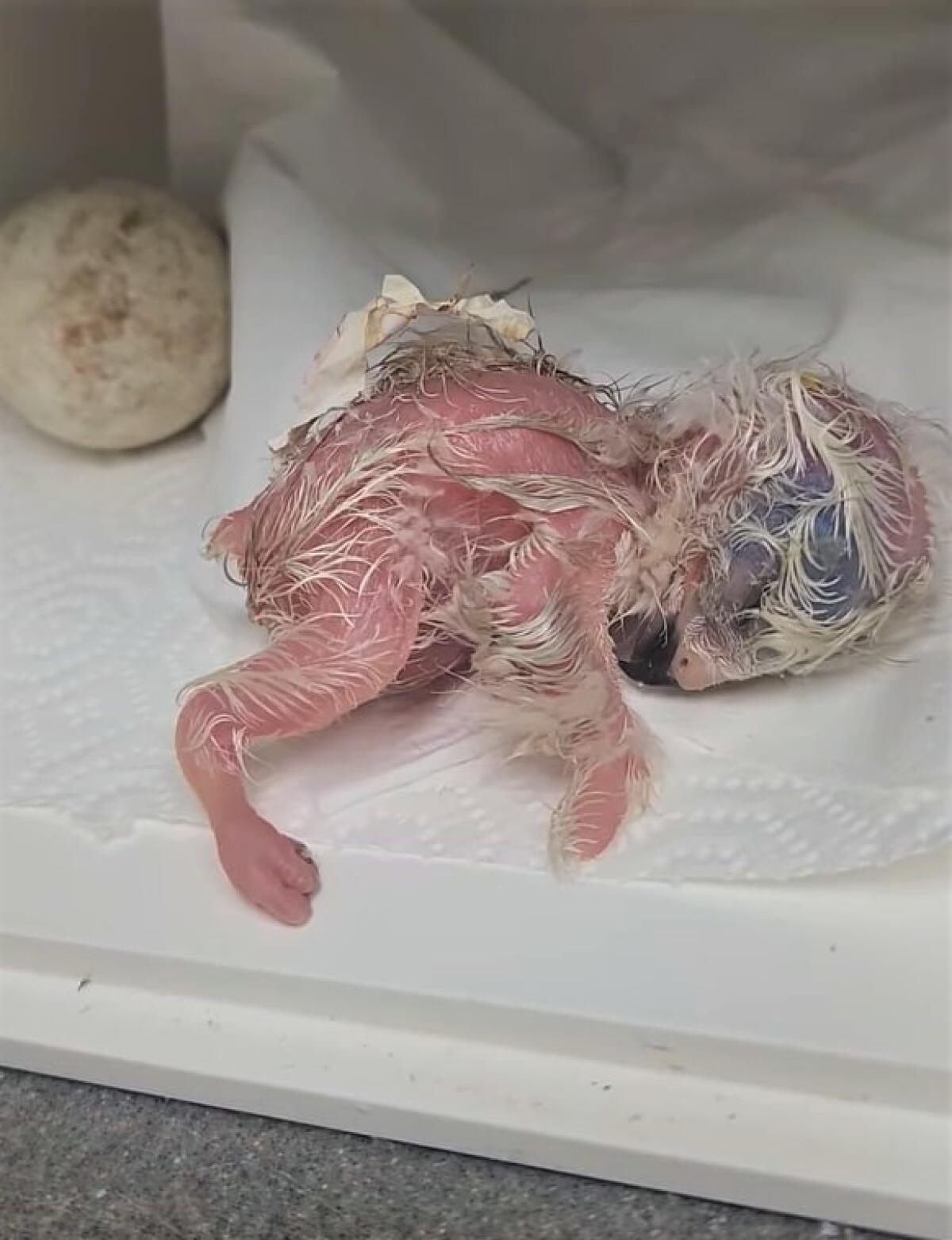Wetlands & Wildlife Care Center breaks egg-citing news of new arrivals — baby hawks

Just a few days into spring, chicks are hatching at the Wetlands & Wildlife Care Center in Huntington Beach, but these babies are not your typical Easter types.
Earlier this month the nonprofit wildlife rehabilitation center got a call from a biologist who’d been called by a utility agency doing work in Aliso Canyon to retrieve two eggs from a nest perilously positioned on a power pole, according to Debbie McGuire, the center’s executive director.
Inside the speckled dark beige orbs beat the tiny hearts of two red-tailed hawks. Because of its location near electrical infrastructure, the nest and its precious contents were at risk. Something had to be done.

The Wetlands & Wildlife Care Center, an Orange County haven for non-domesticated birds and mammals discovered misplaced, wounded or needing extra care, was far away one of the only possible places to take the still-shelled hawks with permission from state wildlife officials.
“Normally we only take in the eggs of threatened or endangered species,” McGuire said Wednesday in between hatchings, adding the red-tailed hawk is a species whose status is considered stable. “But this was a special circumstance, and we were there.”
The eggs were gingerly transported to the facility on Pacific Coast Highway, where they were candled to assess the embryos’ age and viability. While the biologist thought they might be in the early stages, McGuire said the candling light was blocked, suggesting maturity. Hawk eggs take about 28 to 35 days to hatch.

For the next two weeks staff kept watch as an incubator, designed to simulate the actions of watchful parents in the nest, turned the eggs to keep the nutrients underneath the shells flowing to the wee occupants.
Then suddenly, one of the eggs began to rock gently in a process called “pipping” — a sure sign baby was on the way.
And on Tuesday at 5:45 p.m., nearly an hour after the Wetlands & Wildlife Center closed for the day, the first egg hatched. McGuire and her team huddled as a naked, pink body lined with wet wisps of proto-feathers broke free of its calcium carbonate enclosure.
The still-blind baby, called an eyas, was placed in its own private room, where the sounds of red-tailed hawks played to approximate sounds that might be heard in a natural environment.
A second hawk hatched Thursday afternoon and joined its sibling in the isolation area. Because red-tailed hawks are predators, babies eat meat right away, as opposed to regurgitated material, said McGuire, whose team is making meals of frozen baby mice.

It will take around six weeks or so for the pair to begin the fledging process, but they will still need to be supported as they learn to fly and hunt inside the safety of an aviary.
“They may have to go to the [Orange County] Bird of Prey Center or the Ojai Raptor Center for their final flight training,” McGuire said. “We want to make sure we give them the very best chance of surviving.”
Until then, the small birds will need to be closely tended to by humans, and great care must be taken to ensure they do not imprint onto people, which could incapacitate them in the wild or inhibit their ability to hunt.
To prevent that, Wetlands & Wildlife Care Center staff wear a ghillie suit — a shaggy green camouflage cover resembling a bush — and mirrored face masks that reflect the chick’s own faces back to them.
Although the eyases must be kept tucked away from the visiting public, their arrival coincides with the start of a new “Wildlife Wednesdays” program, which allows visitors a weekly peek at the center’s wards from 10 a.m. to 2 p.m. with a $20 donation. A May 11 “Wildlife Baby Shower” is also in the works.
The Wetlands & Wildlife Care Center is located at 21900 Pacific Coast Highway, Huntington Beach. For more, visit wwccoc.org.
All the latest on Orange County from Orange County.
Get our free TimesOC newsletter.
You may occasionally receive promotional content from the Daily Pilot.




